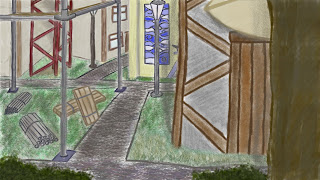For this animation, we were asked to look at the walking cycle. This consisted of multiple principles such was squash and stretch, pose to pose, arcs, secondary action and timing. This was done over 25 frames where the first and last frame were exactly the same. I started by creating the arc and then positioned the head and body throughout all of the frames, as they do not change in size. After I drew the legs for frames 1, 4, 7, 10 and 13, then worked between them (doing the same for the other half). I left the arms until last as they move in an opposite motion to the legs.





